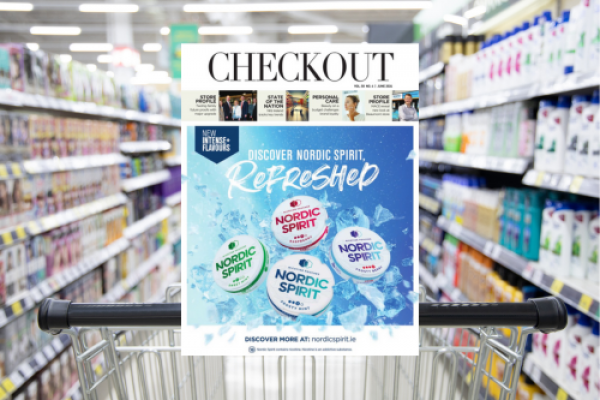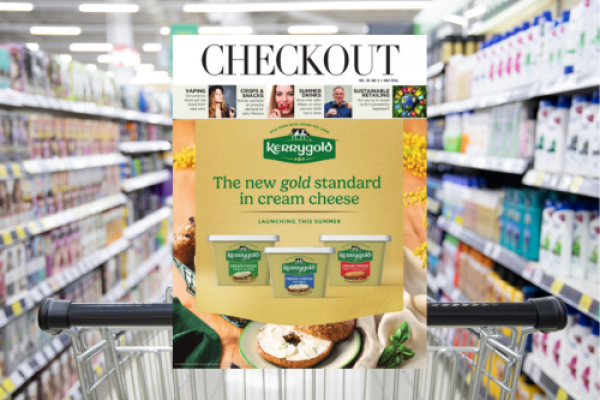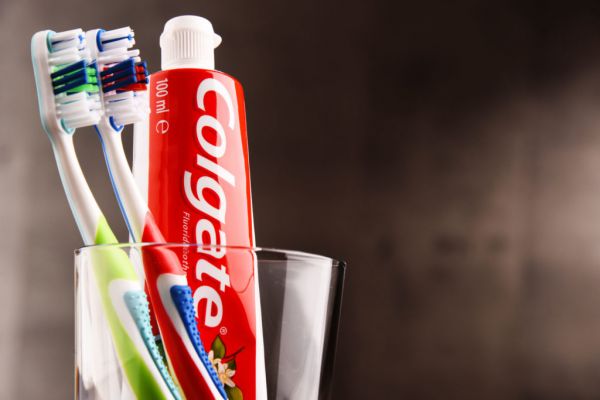With so much focus being placed on in-store solutions at present, this year’s ECR Ireland Category Management & Shopper Marketing Conference was well-timed. Checkout reports.
The ECR Ireland Category Management & Shopper Marketing Conference, which took place at Citywest Hotel last month, has evolved considerably over the past few years. While category management still forms the backbone of the event, recent years have seen increased focus on shopper marketing and in-store solutions, reflecting the increased level of dialogue between retailers and suppliers in the market. As ECR Ireland’s Declan Carolan noted in his introduction, “previously, most retailer-supplier negotiations were solely based on price, but now retailer-supplier collaboration is hugely important to the industry,” not just in terms of raising brand exposure, but also in terms of lifting whole categories.
As with previous events, the ECR CatMan Awards formed the centerpiece of the event, with presentations from BWG Foods/Unilever, Musgrave Retail Partners Ireland and Tesco/P&G in the running. The event was sponsored by IBM and BrandView, with Checkout as the media sponsor.
Ice Cream – We’ve Got It Licked
Barry Carty of BWG Foods and Shay Leonard of Unilever Ireland offered an interesting view of the ice cream sector in Ireland, and the methods undertaken (as part of BWG’s CatManCanDo initiative with Talysis) to lift the category. When approaching the ice cream fixture, Carty explained, “customers were confused and there was a lack of a perception of value for money,” which in turn led to a double-digit decline in ice cream sales over the past three years. “We needed to change the mindset of retailers and convince them that ice cream sells all year round, not just in summer,” he added.
To achieve this, research was undertaken to analyse why ice cream sales remained stagnant, and found that communication around the category needed to be improved, along with a clear pricing approach: in short, an ‘in-store destination’ for ice cream needed to be created. Research from Talysis also indicated a need for a set of clear price points, covering the entire HB range (at €1, €1.20, €1.35 and €1.80). Following a test period, a rollout to 120 stores has delivered value sales increases of 3.6%, unit sales increases of 4% and cash margin growth of 4.6% in the category.
Category Management In A Franchise Model
Paul Corcoran of Musgrave Retail Partners Ireland addressed how category management principles can be adopted to the franchise model, in this case Centra and SuperValu, where store sizes and formats can vary significantly. “Our approach to managing our range and our way of working internally and with our suppliers and retail partners had evolved over a number of years,” Corcoran explained, and the business needed to create a “cheaper, better, faster solution” for its retailers on an ongoing basis.
Several processes were implemented to make this a reality; customers were segmented both in terms of demographics and in terms of their ‘shopper missions’, how and why they interact with stores in the group. A communication platform was established and customer feedback encouraged, enabling Musgrave to develop the right range to meet an individual shopper or store’s needs, which in turn would be implemented: “Think like a consumer, act like a retailer,” said Corcoran. Following execution, sales increases were seen across several core categories (prepacked cooked meats up 6%, laundry up 10%, take home soft drinks up 11%).
The One-Stop Baby Shop
The winning programme in this year’s ECR CatMan Awards, however, was presented by Tesco Ireland and P&G, who together developed a ‘one-stop baby shop’ concept in Tesco’s Maynooth Extra store, as well as a scalable concept in its Dun Laoghaire Bloomfields outlet that will form the basis for a nationwide rollout.
As with Tesco’s previous work with Diageo (on developing an off-licence concept) and Danone (on a dairy wall concept), this was a holistic solution that sought to lift not just P&G’s sales, but also those of the whole category, creating a real point of differentiation for new parents. The objectives, as Sharon Doherty of Tesco and P&G’s Karen Moody, explained, were fourfold: to “surprise and delight shoppers, to drive penetration and spend, to retain the loyal value shopper, and to develop a long-term relationship with mums.”
This was achieved through the development of clear identifiable signage in-store (including floor graphics leading consumers to the baby area), a ‘new baby tower’ with interactive touchscreens and advice for new mums, and a number of shopper journey touch points supporting the product ranges available. Since introduction, there has been a 7.7% growth in the number of customers shopping in the baby category in Maynooth Extra, and a nationwide store rollout is expected in January, followed by a similar rollout in Czech Republic, Poland and Hungary, and an online support strategy.
Shopper Solutions
As well as presentations from the ECR CatMan nominees, the conference played host to a series of discussions on everything from shopper savviness to digital showrooms. Adrian Sanger, global head of shopper at Nielsen, asked whether the savvy shopper is now ‘the new normal’, arguing that when it comes to the path to purchase, “what was once a linear process is now far more ‘snakes and ladders’.” Retailers and brands that could “be there at the right place at the right time” could thrive in this environment, and he encouraged those present to put data at the heart of their CRM strategies.
Picking up this data theme, Damien Camoz of IBM said that we have now “entered the age of the empowered shopper”, and that there needs to be a move away from a “product-centric merchandising approach to a customer-centric marketing approach”. When planning promotions, he noted, “you need to ensure that the promotion is lifting the category”, rather than lowering the perceived value credentials of a traditionally strong product or category. Also appearing in the morning session, Clodagh Ashe of Delphi Analytics warned against leaning too heavily on market data, adding “there’s no one perfect data set. It’s what you do with that data that matters.”
Developing A Category Vision
Rob Mullen of Kerry Foods addressed how the group has sought to develop a category vision in the sliced meats category, noting research that indicated that the average customer spent 24 seconds at the sliced meats fixture, “generally looking for promotions or checking the best before date; it’s not a quality 24 seconds.” On the back of this research, Kerry Foods has developed in-store concepts targeting consumers not around category, but around solutions, taking into account the different uses for sliced meats in food preparation; this, in turn, has led to greater in-store engagement with the brand. Representatives from Kimberley Clark and Kraft Foods also emphasised the need for customer engagement in their respective presentations, with the former focusing on how to enhance engagement with its Kleenex brand, and the latter using in-store activation to boost sales of Philadephia soft cheese outside of its traditional category.
While last year’s event focused on the evolution of the ‘category manager’ into the ‘shopper marketer’, presentations at this year’s event focused on a further evolution: into the area of ‘shopper solutions provider’. Based on the discussion points raised, the era of retailer-supplier acrimony is well and truly coming to an end, and brands that are willing to engage with stores on developing in-store solutions will be the ones that are best placed for the challenges of the coming years.









